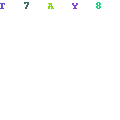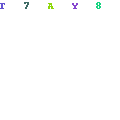 There are over 60 blog posts by Bryan Foster for the school marketing professional on the 'SMA: School Marketing' website. These are aimed at informing, in quite detail, those responsible for marketing schools, especially the School Marketing Manager.
There are over 60 blog posts by Bryan Foster for the school marketing professional on the 'SMA: School Marketing' website. These are aimed at informing, in quite detail, those responsible for marketing schools, especially the School Marketing Manager.Many of these blog posts, up until March this year, have also appeared in the School and Church Marketing Bog Posts: My First 100+ by Bryan Foster 2010 e-book. New ones have been written after this date.
Since March the length and depth of each post has increased significantly. This enables quite detailed support for the school marketing manager.
Topics at this blog cover an enormous range. A selection of topics from the past few months include:
Social Networking Website Use for Schools and School Marketing
External Blog Sites Assist School Marketing
Digital and Traditional School Marketing – Instructional Manual
Advertising in the Traditional Media – School Marketing
School Marketing Manager
Blogs Necessary for School Marketing Plans
School Website – SEO – Search Engine Optimization
School Marketing Plan and Strategies
Word of Mouth Still Best School Marketing Strategy
Bryan Foster – 2010 e-Books for School Marketing Plan and Strategies
Website Homepage Essential for School Marketing
Good School Marketing Websites
These blog posts enable the School Marketing Manager to become more fully informed as to the latest methods for marketing the school successfully in this modern digital age. Use of both successful contemporary and traditional means have been highlighted.
Each of the methods have been used successfully to market schools, and / or other commercial endeavours - which should equate well into the school marketing sphere.
Bryan Foster has written 5 marketing e-books related directly to school and church marketing! The latest school marketing manual is 369 A4 pages of summarized points. The latest church marketing manual e-book is 329 A4 pages of summarized points. Each e-book has a detailed Contents page and Index page.
There are also over 60 blog posts for the church marketing personnel at the CPM: Church Parsih Marketing website.
School Marketing Managers should also regularly view the School Marketing Hints and Tips on this website. These are in addition to the detailed Blog Posts on this site and are in a more succinct format.
There are also over 60 blog posts specific for the church marketing personnel which may be found at the CPM: Church Parish Marketing Website Blog.
The ‘Over 60 School Marketing Blog Posts’ blog post was written by Bryan Foster author of School Marketing Manual for the Digital Age (3rd ed) 2010.


